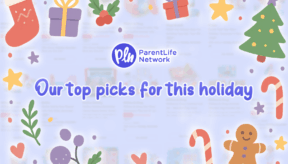While most people can agree shows like ‘This is Us” and “The Queens Gambit” are all the rage, their plots are particularly significant to those of us that have been on stand-by for mainstream representation. That’s right, folks! I’m talking about those of us that were raised by adoptive parents.
It’s reassuring that in 2020, pop culture can explore the raw complexities of adoption without representing us as feral jungle children. It’s a small-ish victory, but we’ll take it! In fact, young adoptees are finally getting to see characters like Beth (The Queen’s Gambit) and Randall (This is Us) maintain their dominance, success and competitive edge while they navigate their unique interpersonal battles. That’s pretty badass, in my opinion.
But when it comes to raising adoption awareness, trendy shows aren’t nearly enough. In light of November being National Adoption Awareness Month (NAAM) I spoke with Sharon Gollert to get her insights. She’s the Executive director of Family by Adoption Inc. It’s an international adoption agency and non-profit corporation licensed by the Ministry of Children, Community and Social Services. Her work is imperative for prospective adoptive parents in Canada. She helped place me in my adoptive family about 24 years ago.
In your experience, what are some of the main reasons someone would choose adoption?
Infertility is a leading reason. For international adoption, there are also couples who have biological children but want to grow their family by adopting a child living in an orphanage in another country, but needs a safe home.
Single female applicants may decide to adopt instead of using an anonymous sperm donor to try to become pregnant.
It’s also important to understand your motivation to adopt. If you have experienced infertility and pursued IVF and artificial reproduction methods, contemplate when you are ready to proceed, or to concentrate on adoption instead of IVF. Both require emotional energy and resources. Also, talk to other families who have decided to build their family through adoption.
Choosing to adopt is a life-long decision and it’s important to understand the added responsibilities you would have as an adoptive parent. Whether you are adopting domestically or internationally, recognizing the significance of your child’s biological parents is important.

Why is it important that adoptive parents acknowledge the birth family in their child’s life?
Acknowledging a birth parent is fundamental to the child’s identity. This is true regardless of whether the adoption includes openness or not. For international adoptions, adoptive parents still need to honour the fact of the child’s birth parents, even if the child will never know who their birth parents are.
Here are a variety of ways to increase multiculturalism, if adoption will build you a transracial family.
What are some of the main paths to adoption?
There are three avenues in which adoptive applicants can adopt a child:
Public Adoption:
Families can adopt a child in Ontario through the public child welfare system. This means that the adoptive applicants work with their local Children’s Aid Society towards adopting a child living in a foster home within the province. Public adoption does not cost anything because Children’s Aid Societies services are funded by the government and adoptive applicants therefore do not pay fees.
Adoptive applicants can attend The Adoption Resource Exchange, a conference held in Ontario at least twice a year to better understand public adoption and the children who are in need of adoption.
Private Adoption:
Private adoption is the adoption of a child, usually a newborn baby, through a private adoption licensee or agency. It is funded by fees that adoptive parents pay for services and is not funded by the government. Private adoptions are typically open adoptions today.
Intercountry Adoption:
Intercountry adoption is the adoption of a child living in another country. This does not involve open adoption. International adoptions are facilitated by licensed international adoption agencies.
When deciding on which path to pursue, consider the unique influence that each may have on the development of your child.

Do most parents choose open adoption?
Openness in adoption has become common in local private adoptions and many public adoptions as well. Some form of openness is seen as being beneficial to adopted children and therefore adoptive applicants need to learn about the benefits of openness before deciding to adopt.
What do adoption agencies typically look for when screening adoptive applicants?
Adoptive applicants in Ontario must now complete a 27-hour course called “Parenting Resources for Information, Development and Education” (PRIDE) at the time that they are completing their adoption homestudy. The PRIDE course is in recognition of the fact that adoptive parents have extra responsibilities associated with being adoptive parents for their child.
Structured Analysis Family Evaluation (SAFE) is the homestudy assessment model that social workers use to assess the adoptive applicants. It assesses how much the adoptive parents have absorbed from PRIDE, which covers areas including but not limited to child welfare systems, loss issues in adoption and the importance of community for children. A social worker will also likely ask questions about your marriage relationship, why you want to adopt and other areas pertinent to recommending you as a prospective adoptive parent.
There’s a lot to keep in mind before making these types of life-changing decisions, and the pandemic definitely doesn’t make things any lighter. But whether you’re planning to adopt or know someone that is considering it, knowing the basics is always a good start. Having a general understanding of the process helps increase social awareness, and debunk harmful myths, questions and stereotypes targeted towards adopted children and their families. We can’t rely on mainstream media to start every conversation within this space. We need to do our own research and actively participate in a more inclusive future.
If you are considering adoption and want to learn more about what the homestudy process looks like, you can visit Family by Adoption Inc. For more province-specific information on adoption in Canada, click here.
*Opinions expressed are those of the author, and not necessarily those of Parent Life Network or their partners.




 Sponsored
Sponsored



